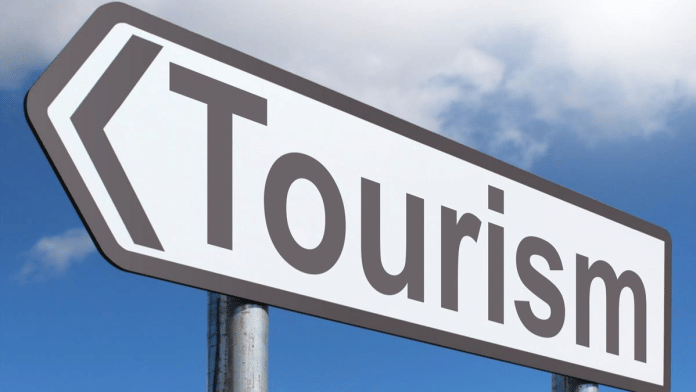Thank you dear subscribers, we are overwhelmed with your response.
Your Turn is a unique section from ThePrint featuring points of view from its subscribers. If you are a subscriber, have a point of view, please send it to us. If not, do subscribe here: https://theprint.in/
Inbound tourism is a sector that has the transformative power to propel India’s economy to unprecedented heights, generate millions of employment opportunities, and showcase the country’s rich cultural tapestry to the world. Welcome to the realm of tourism!
The very act of travel started with the need to survive; the survival of the human race was dependent on three fundamental needs: food, water, and shelter. Men would explore and venture to new lands if any of these conditions remained unmet. This very act of travel has changed from the emergence of ancient civilisations to the advent of modern-day tourism businesses.
As transportation improved, curiosity about the world created a new industry based on tourism.
The tourism sector is essentially based on cost, comfort, and security.
As the largest single source of foreign exchange earnings for India, tourism has the potential to outshine all other industries, creating the largest economic multiplier effect. The tourist’s spending ripples through a large number of businesses.
India has everything to offer visitors: history, culture, adventure, nature, pilgrimage, medical tourism, education, and music and dance schools. However, India’s tourism sector remains in its nascent stages despite its vast potential.
One must first understand India’s current position on the global tourist map, using the 2018 FTA as a reference point, especially considering that many Asia-Pacific countries are performing significantly better than India.
According to the GOI Ministry of Tourism’s publication “Indian Tourism Statistics at a Glance 2019”, 2018 had the highest FTA in the recent seventy-odd years.
The beginning of the 2019 season was impacted by COVID, which had a stronger adverse impact on the tourist industry starting in 2020 onwards and is now inching towards the 2018 figures.
In 2018, 17.43 million FTAs visited India, including 6.87 million “NRIs” and 2.26 million Bangladeshis. (Pg:1) This leaves us with just 8.30 million legitimate FTAs that promote the tourist industry.
The Asian-Pacific countries for the same period have fared far better. China (62.9 million), Thailand (38.3 million), Hong Kong (29.3), and Malaysia (25.8 million).
In contrast to FTA arrivals to India, the number of Indians travelling abroad over the same time was fairly impressive, totalling 26.29 million. (Pg: 85)
Indians go abroad three times more frequently than foreign visitors; it looks like we have more travel agencies than tour operators, which is a positive sign, but we would make more money if the numbers were reversed.
The distinction between travel agencies and tour operators is crucial. While travel agents sell and administer tour packages, tour operators plan, arrange, sell, advertise, and operate tours. Recognising this difference is vital to creating more tour operators who can showcase India’s diverse offerings.
To promote tourism, the State Government Tourism Departments operate as catalysts, organise road shows and workshops every year in other countries, invest large sums of money, and provide a platform for the travel trade industry to participate; the non-state partners do not capitalise on this opportunity to promote their travel products.
To unlock India’s tourism potential, it is crucial to tackle the grassroots challenges, pinpoint areas for development and design tour products that meet the diverse needs of tourists.
A paradigm shift in our approach to tourism is essential, concentrating on goal-orientated market strategies and revitalising the existing tourist infrastructure. It’s time to alter our approach, emphasising country-specific preferences and evaluating visitor demands.
To meet tourists’ expectations, it is essential for all stakeholders to collaborate in developing new standard operating procedures (SOPs) for tourism-related services, as “ethical tourism” has become the prevailing standard. To streamline on-site grassroots issues, specific legislative changes may be necessary to enhance the appeal and accessibility of tourism destinations.
It is time for us to come together, revaluate our approach to tourism, and create a sector that fosters pride in India.
Let’s revolutionise India’s tourism landscape and unlock the gate to growth!
S.W.H. Zaidi, Email: mailzaidi2002@yahoo.com
Ref: Indian Tourism Statistics at a Glance 2019, Pages 1 & 85


These pieces are being published as they have been received – they have not been edited/fact-checked by ThePrint.


